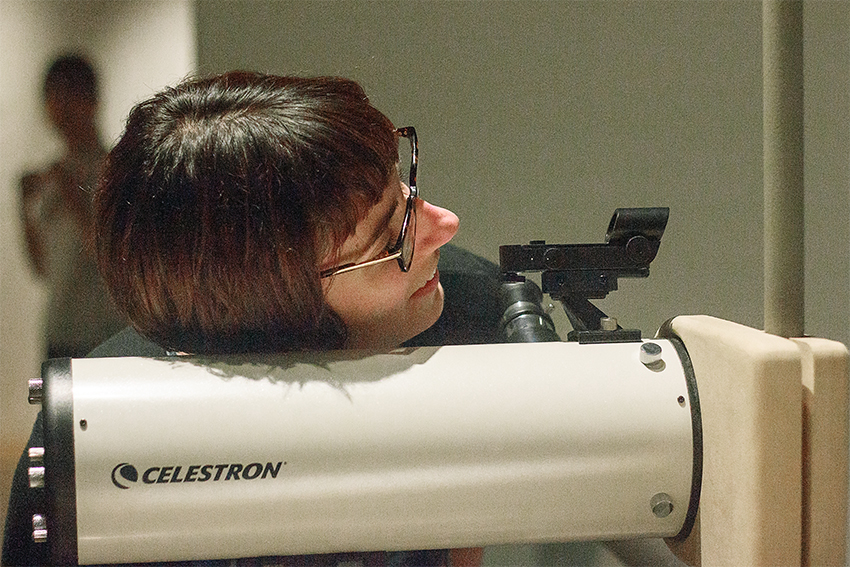Science and art collide at the Omnibus Filing exhibit, an art installation which opened last Friday and is located at UT’s Visual Arts Center.
Exhibits include a robot that drops seeds to write out robot-related poems, wearable boots wirelessly paired to speakers that squeak loudly in response to movement and a scientific manuscript printed on a stack of full-sized blankets on the floor where visitors are encouraged to relax.
The exhibit is the result of an ongoing, three-year project between chemical engineering professor Brian Korgel, visiting art assistant professor James Sham and artists Daniel Bozhkov, Steven Brower and Patrick Killoran. The interactive exhibit was named for the legal term describing a collection of unrelated ideas brought together in a single patent application.
Omnibus Filing was born out of the research project Rapid Design Pivot, led by Korgel and Sham, which studies how institutions can foster and maximize technological innovation. The artists have been working in labs alongside scientists and engineers to develop pieces that bridge disciplines.
“(Rapid Design Pivot is) bringing artists and scientists together to create art, but also to inject artists into the scientific process,” Korgel said. “Our proposal was that by injecting artists into the scientific process, you might speed innovation.”
By bringing artists into the process, Korgel said they could share creative ideas and ways of thinking that may not have been familiar to a scientist. He added that his Ph.D. students, who had been working with artists, changed their thinking style and became more open and willing to explore beyond the boundaries of their expertise.
“What I found through this process is that scientists and engineers are constrained by these boundaries that funding agencies put on the work,” Korgel said. “While funding is an important consideration, I think that scientists and engineers would benefit from realizing that the more creatively they can explore different ideas, the better the work comes.”
He added that throughout this process he learned that scientists, engineers and artists have a lot in common.
“Engineers and scientists make things, trying to realize ideas and demonstrations of things in the real world, and that’s what artists do also,” Korgel said. “Artists come up with a concept of some sort, and they have to realize it and make it.”
In addition, he said artists and society need to be exposed to and involved in the forefront of science and engineering.
“(People) should be asking the same questions (that scientists are asking) … about emerging technologies and what science is,” Korgel said.
The outcome has been a collection of one-of-a-kind artistic inventions that transcend an unpredictable level of creativity, Korgel said.
International relations freshman Nathan Smith, who attended the opening reception, said the exhibit stood out to him because it was extremely interactive.
“The combination of science and technology with the world of art is one that has been a long time coming,” Smith said. “Elements of art already present themselves in the world of science and technology in varying and numerous ways. It is only appropriate the combination of these worlds be as beautiful as the exhibit itself.”
The exhibition, which is free to the public, will be open until Feb. 24.
















